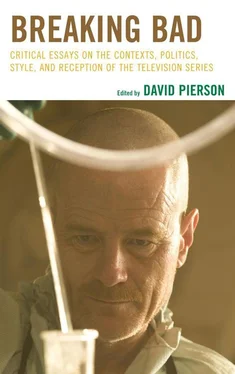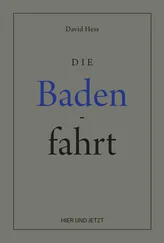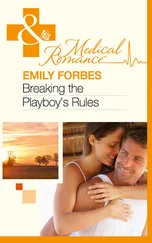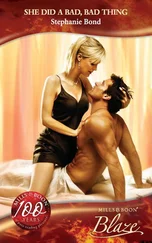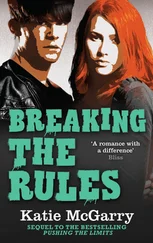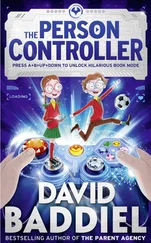Uexküll’s investigations into the animal environment are contemporary with both quantum physics and the artistic avantgardes. And like them, they express the unreserved abandonment of every anthropocentric perspective in the life sciences and the radical dehumanization of the image of nature…. Too often… we imagine that the relations a certain animal subject has to the things in its environment take place in the same space and in the same time as those which bind us to the objects in our human world. This illusion rests on the belief in a single world in which all living beings are situated. Uexküll shows that such a unitary world does not exist, just as a space and a time that are equal for all living things do not exist. The fly, the dragonfly, and the bee that we observe flying next to us on a sunny day do not move in the same world as the one in which we observe them, nor do they share with us—or with each other—the same time and the same space. (39-40)
HEISENBERG: USES AND MISUSES IN CONTEMPORARY TV SERIES
The name of Heisenberg, the uncertainty principle, Schrödinger’s cat, and the quantum mechanics’ “mystery” are recurrent topics in contemporary TV series. [12] I tried to map the presence of science in contemporary serials in Brodesco 2013.
Let us take a look at a few examples. In the episode “The Luck of the Fryrish” (3/11/01) of Futurama , [13] Created by Matt Groening, Fox, 1999-.
Professor Farnsworth goes to the races. Two horses cross the end-line perfectly tied-up. An electronic microscope is used to indicate the winner. The speaker declares that the winner is horse number three “at quantum finish.” Farnsworth, who bet on another, complains, “No fair! You changed the outcome by measuring it!” In “The Monopolar Expedition” (5/11/09) of The Big Bang Theory , [14] Created by Chuck Lorre and Bill Prady, CBS, 2007-.
the main character (a theoretical physicist) waiting for an important meeting says he will be, in between, a “Heisenberg particle.” One episode of Numb3rs [15] Created by Nicolas Falacci and Cheryl Heuton, CBS, 2005-2010.
is titled “Uncertainty Principle” (1/28/05). In the mother of all modern series, David Lynch’s Twin Peaks , [16] Created by Mark Frost and David Lynch, ABC, 1990-1991.
one character explicitly quotes Heisenberg, “What we observe is not nature itself, but nature exposed to our method of questioning” (“Checkmate” 1/19/91). The Schrödinger’s cat paradox is mentioned in Futurama (“Law and Oracle” 7/7/2011), Six Feet Under [17] Created by Alan Ball, HBO, 2001-2005.
(“In the Game,” 3/3/02), FlashForward [18] Created by Brannon Braga, David S. Goyer and Robert J. Sawyer, ABC, 2009-2010.
(“Scary Monsters and Super Creeps” 10/29/09). Even in the pilot of Eureka [19] Created by Andrew Cosby and Jaime Paglia Eureka, SyFy, 2006-2012.
(“Pilot” 7/18/06) there are references to quantum mechanics. In Lost ’s [20] Created by Jeffrey Lieber, J. J. Abrams and Damon Lindelof, ABC, 2006-2010.
“Because You Left” (1/21/09) one of the main characters, Sawyer, confronts Daniel Faraday, a former Oxford researcher. The latter says, “We really do not have time for me to try to explain. You have no idea how difficult that would be for me to try to explain this… this phenomenon to a quantum physicist.” In one of the first scenes of Rubicon [21] Created by Jason Horwitch, AMC, 2010.
(“Gone in the Teeth,” 6/13/10) we see the main character leaning on a bookshelf a volume on string theory.
Also, Breaking Bad makes a direct reference to physics by quoting the string theory. In “Live Free or Die” (7/15/12), Walter, Jesse, and Mike are trying to solve the problem of the video data archived in Fring’s laptop now in possession of the DEA. They think about contacting a familiar junkyard operator to use his giant-size magnet. In the negotiation with the man, Walter asks him if it is feasible or not. The answer is, “Hey, we’re living in a time of string theories and God particles. Feasible, doable? Yeah, sure, why not? Expensive.” As we can see, the use or misuse of Heisenberg’s name and quantum mechanics principles has become very common in TV series and, more generally, in other fields that have nothing to do with physics—popular fiction, anthropology, sociology, literary criticism. Theoretical physicist and science writer David Lindley (2008) questions the legitimacy or necessity of mentioning Heisenberg in such heterogeneous contexts and for such various purposes, with just a metaphorical connection with Heisenberg’s statements on measurement. He writes about a “curious annexation of an esoteric idea” that is used to say “that what you see varies according to what you are looking for, that the story depends on who is listening and watching as well as who is acting and talking” (7, 213). Lindley elaborates on the perspective.
But this is easy to understand. Put a bunch of cameras in the middle of a tense and private situation, and people will start acting oddly. No one who has taken photographs at a wedding or tried making a home movie of a family reunion will be surprised by this. Why drag Heisenberg into it?… If Heisenberg’s principle doesn’t enter all that often into the thinking of the average physicist, how can it be important for journalism, or critical literary theory, or the writing of television screenplays? (213-214)
The answer we may give is that the recurrent presence of Heisenberg is a symptom of a cognitive apprehension affecting the contemporary mediasphere. Present-day American TV series incorporate in their narrative the complexity or incomprehensibility of the world, admitting an essential cognitive frailty. Richard Feynman’s statement “I think I can safely say that nobody understands quantum mechanics” (quoted in Kumar 2009, 351) may easily and legitimately be reformulated as “I think I can safely say that nobody understands Lost .” The structure and storylines of many TV series assume the shape of a puzzle, of a mind game. [22] A genre recently elaborated within the field of Film Studies is the “mind game film,” a movie—from The Sixth Sense (M. Night Shyamalan, 1999) to Inception (Christopher Nolan, 2010)—that inquires and defies audience’s understanding, progressively unsettling and withdrawing the information and knowledge that text had delivered (see Elsaesser 2009).
Lost , Fringe , [23] Created by J. J. Abrams, Roberto Orci and Alex Kurtzman, Fox, 2008-2013.
Alcatraz , [24] Created by Elizabeth Sarnoff, Steven Lilien, Bryan Wynbrandt, Fox, 2012.
The 4400 , [25] Created by René Echevarria and Scott Peter, USA Network, 2004-2007.
Dollhouse , [26] Created by Joss Whedon, Fox, 2009-2010.
and Flash Forward are all series that challenge “the reliability, necessity and readability” (Di Chio 2011, 178) of the worlds produced by fiction. Space-time complications, time travels and parallel universes—with all the logical paradoxes and philosophical questions implied—are some of contemporary series’ favorite devices. Audiovisual products that ask for expanded plots can rely on the expansion of reality produced by sciences—especially by disciplines that move beyond common sense as relativity theory or quantum mechanics—to stimulate and defy the “ libido cognoscendi ” (Jost 2011, 30) of the viewer. Science is a tool that can be employed to multiply the storylines, authorizing the “coexistence, in a single universe of experience, of situations instead incompatible” (Coco 2006, 24), successfully mixing rationality and mystery, acting as a mediator between plausible and fantastic. Cognitive apprehension goes together with ethical doubt. Also Breaking Bad , although in a very different way than Lost , walks on the edge of uncertainty.
Читать дальше
